Overhead handling: Raise worker safety
Manufacturers of overhead handling equipment are putting an emphasis on safety while creating new, automated solutions that help people work smarter, better and faster.
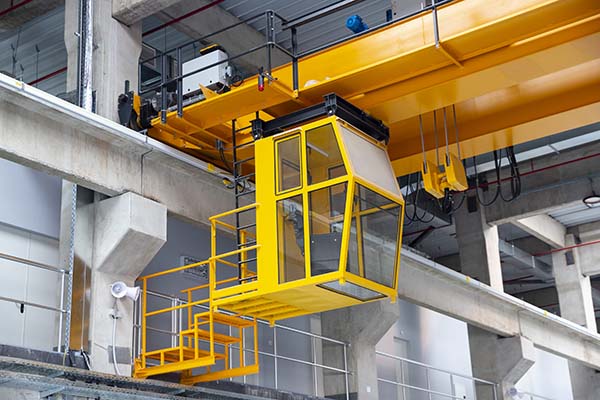
With warehousing, distribution and manufacturing professionals focused on doing more with less, speeding up processes and maximizing existing space, overhead handling equipment’s role in the distribution center has become more important than ever. Add automation and other technological innovations to the mix and crane, hoist and overhead handling equipment manufacturers are making sure to keep a watchful eye on worker safety as well ergonomics.
“Overhead handling is a mature market, but we’re always coming up with new innovations and new twists on things,” says Martin Marincic, product manager of cranes for Demag Cranes & Components. “We either look for product improvement or innovative product leaps whenever possible.” That innovation has garnered the attention of major companies like Airbus, which in 2014 ordered 10 Demag process cranes in its new assembly facility in Mobile, Ala. “This project includes several levels of automation and sophistication and also has a lot of safety built into it,” he adds.
The issue of safety has grown in importance for managers looking to put “safety first” within their own corporate cultures. To accommodate this demand, overhead handling equipment manufacturers are emphasizing safety. “Every meeting we have starts off with a safety-related topic,” says Marincic. “We not only make sure that we adhere to all safety standards, but we also offer training at our facilities on how to safely inspect and repair our products.”
Konecranes is also putting a bigger emphasis on safety, according to Chuck Snook, sales manager for Region Americas, WLS. “We’re starting to see a growing shift toward safety as a culture—and basically part of our DNA in the day-to-day manufacturing environment,” says Snook, who sees the push for better productivity and the need for ergonomic products (to alleviate repetitive strain injuries, for example) as the other forces currently driving innovation in the overhead handling sector.
“When we design equipment or add new products to a facility, we’re actually suiting the job to the person as opposed to finding the right person for a specific role,” says Snook. “Because of this, the equipment we’re making has to cover a very broad spectrum.” That’s where both safety and ergonomics come into play, says Snook, and it’s why both play critical roles in the production, installation and use of overhead handling equipment.
“It’s about being more proactive with materials handling needs and solving problems in advance, as opposed to just reacting to those issues,” Snook adds. For example, he says many companies have policies prohibiting employees from manually lifting anything that weighs more than 30 pounds—despite the fact that many adults can feasibly lift an item of this weight. To satisfy this requirement, overhead handling companies are making workstation cranes like Konecranes’ AirBalancer. This pneumatic powered device aids the operator by allowing him or her to maintain a natural lifting motion. “It almost makes the operator super human,” says Snook, “without slowing him or her down.”
The need for speed
Cleve Pechuekonis, Ingersoll Rand’s global product leader for industrial equipment, says manufacturers have been adding new features and benefits to powered hoist offerings (air and electric hoist) as well as to human-powered manual hoists. Before making those improvements, Pechuekonis says he and his group’s product managers spend a time in the field, working closely with end users. “We’re interested in what they’re doing, what they’re lifting, and what products they’re currently using,” says Pechuekonis. “This helps us identify trends, future applications and unmet needs.”
In the distribution space, specifically, Pechuekonis says his team’s field research has turned up a need to move products as quickly and safely as possible without damage. This, he adds, is how companies become as productive and profitable as possible. To accommodate those needs, Pechuekonis says Ingersoll Rand has developed overhead hoists that are extremely fast and precision-controlled to ensure accuracy and safety. “We currently offer hoists that move product at 110 feet per minute,” Pechuekonis says. “We’re talking about being able to get a product 10 stories high up in the air within 60 seconds, and our customers are still telling us to ‘go faster.’”
Up until now, Pechuekonis says overhead materials handling as a whole hasn’t always been as quick to accommodate users’ demands. Because of this, manufacturers are putting more focus on the overhead lifts, the trolley movements, and the actual movement of the equipment on the warehouse’s beams.
With conveyors swiftly transporting items throughout the warehouse, for example, Pechuekonis says the point where the overhead crane or hoist interacts with the pallet (on its way out the door of the warehouse, for example) is a “hot button” area.
“That’s the point where we’ve seen some speed limitations,” says Pechuekonis, who points to pneumatic air hoists as the speediest innovations developed to date. “Electric hoists are still lagging in this [area]; that’s where we’re seeing some potential opportunities.”
In many cases, the “need for speed” doesn’t come into play until it comes time to actually hoist items up into the air. Only then do companies realize their equipment is ineffective or antiquated. “You don’t think much about the crane until you don’t have access to it, and then you realize just how vital it is,” Marincic says. “This piece of equipment can create a real production bottleneck. To avoid that, managers are looking for reliable, trouble-free cranes that meet their ergonomic applications and safety requirements.”
Preventative maintenance
With more and more attention being paid to analytics and tracking within the warehouse, overhead equipment manufacturers are jumping into the fray and coming up with ways to incorporate such capabilities into their cranes, hoists and workstations. With a continual eye on productivity and safety, for example, Columbus McKinnon is adding more diagnostic capabilities to its products. “We’re trying to provide preventative maintenance data,” says Jeff Armfield, executive director of global product strategy and product development.
When that diagnostic data is easily accessible, machine users can keep better tabs on how their equipment is performing on a day-to-day basis. “Having the data that predicts when a machine needs to be fixed, or when something has to be done, is pretty important,” says Armfield, “so we’re focusing some efforts in that general direction.”
According to Armfield, the focus on providing better diagnostics will help users make more intelligent decisions around equipment usage and maintenance. Through this data and related reports, those users will gain a clear picture of just how their materials handling equipment performs during the course of a day, shift or even a single hour. “It’s all right there in front of them,” says Armfield, “and it gives operators a very clear understanding of how their product is operating.”
For now, Armfield says the larger companies are most interested in accessing sophisticated data related to their materials handling equipment, although he expects smaller firms to follow suit in the near future. “The big users in our market are definitely doing more of this,” says Armfield, “with the goal of understanding how well their equipment is running and whether or not their investment is providing a payback at the end of the day.”
On the horizon
Over the next one to three years, Pechuekonis expects the time it takes for overhead handling products to travel throughout the warehouse be whittled down even further based on user demand. Concurrently, manufacturers will maintain a focus on safety and on getting products to their destinations in one piece. Looking out even further, Pechuekonis expects more automation to be folded into the overhead handling product offering.
“Users want to be able to hit a button and have a load taken overhead to a loading dock, where it can then be put on a pallet, wrapped and placed onto a truck,” says Pechuekonis. “With one more press of a button, that crane will return to its original location.” And throughout that process, he says companies will be able to track the loads and know exactly where the products are at any given time.
“The technology that will make this scenario a reality is out there,” says Pechuekonis. “It’s just a matter of adopting it at a reasonable cost because some of that capability can be very expensive.”
With wireless technology continuing to infiltrate today’s warehouses, the overhead handling sector will incorporate even more of it over the next few years. “Wireless technology is really taking off right now and we’re having a lot of cool conversations about it,” says Pechuekonis, who has been asked questions like, “Is there an application that I can put on my phone and use to direct an overhead hoist’s activities?” The answer may be “no,” right now, but Pechuekonis expects that to change within the next three to five years.
As the technology that drives overhead handling equipment continues to advance, the key user demands—safety, speed and ergonomics—will likely remain in place. “When we have conversations with plant managers or engineers, the discussion always starts with speed,” says Pechuekonis. “There’s product coming in and product going out, and it has to be moved within the facility as quickly as possible. Plain and simple.”
Companies mentioned in this article
Columbus McKinnon, cmworks.com
Demag Cranes & Components (a Terex Brand), demagcranes.us
Ingersoll Rand, ingersollrand.com
Konecranes, konecranesusa.com
Featured Overhead Handling Products:
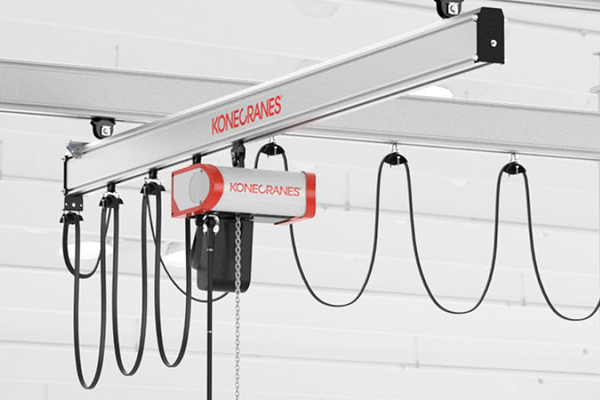 XK-A Aluminium Workstation Cranes
XK-A Aluminium Workstation Cranes
Extremely light, extremely durable.
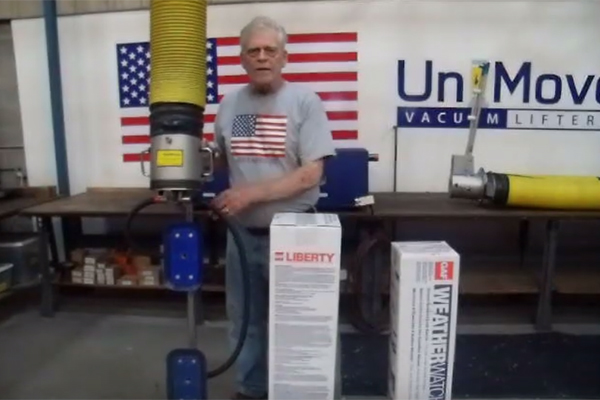 Vacuum Lift Tubes
Vacuum Lift Tubes
Tube lifters operate up to 5,000 rpm for robust performance.
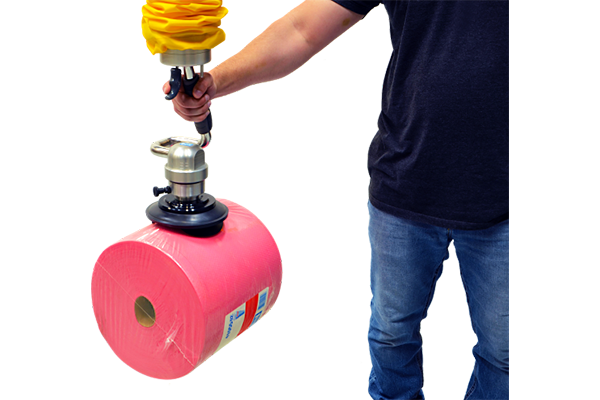 Ergonomic Vacuum Lifting Systems
Ergonomic Vacuum Lifting Systems
Vacuum pads provide safe way to load and unload shrink-wrapped panels.
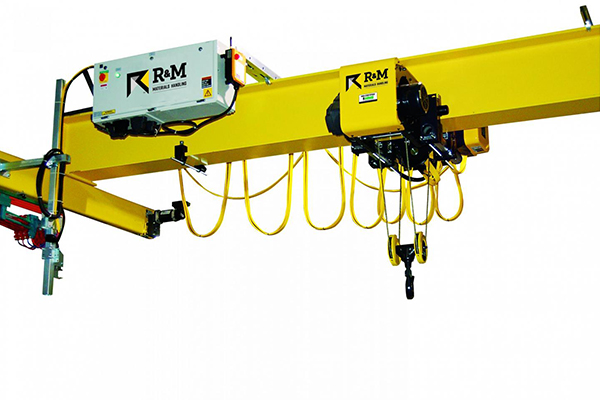 QX wire rope cranes
QX wire rope cranes
Overhead wire rope cranes.
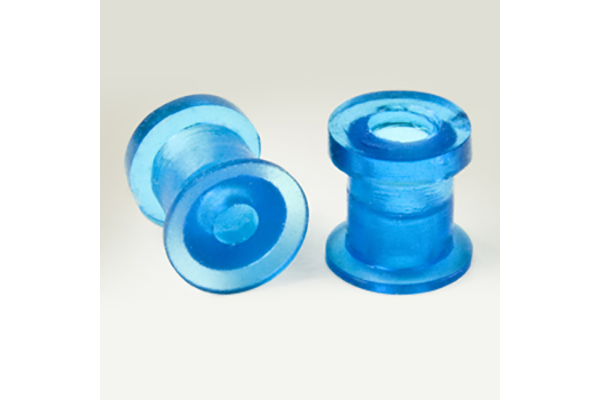 Round Vacuum Cups
Round Vacuum Cups
Vacuum cups for ergonomic lifters ease the move of large and heavy loads.
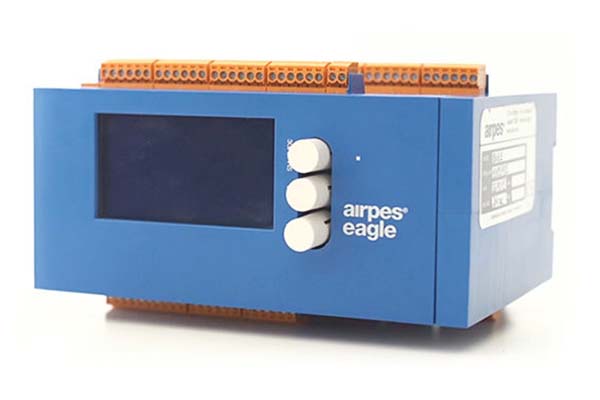 Electronic Limiter and Blackbox Eagle
Electronic Limiter and Blackbox Eagle
Black box control system increases the safety of overhead cranes.

Article Topics
Latest in Logistics
DAT March Truckload Volume Index sees modest March gains National diesel average, for week of April 22, is down for the second straight week UPS reports first quarter earnings declines LM Podcast Series: Assessing the freight transportation and logistics markets with Tom Nightingale, AFS Logistics Investor expectations continue to influence supply chain decision-making The Next Big Steps in Supply Chain Digitalization Under-21 driver pilot program a bust with fleets as FMCSA seeks changes More LogisticsAbout the Author
Subscribe to Logistics Management Magazine

Find out what the world's most innovative companies are doing to improve productivity in their plants and distribution centers.
Start your FREE subscription today.
April 2023 Logistics Management

Latest Resources














